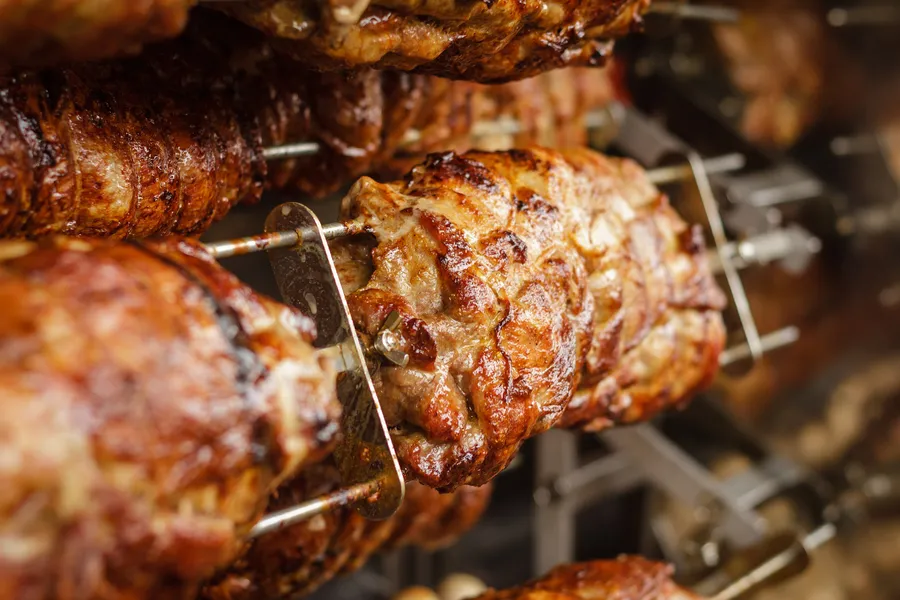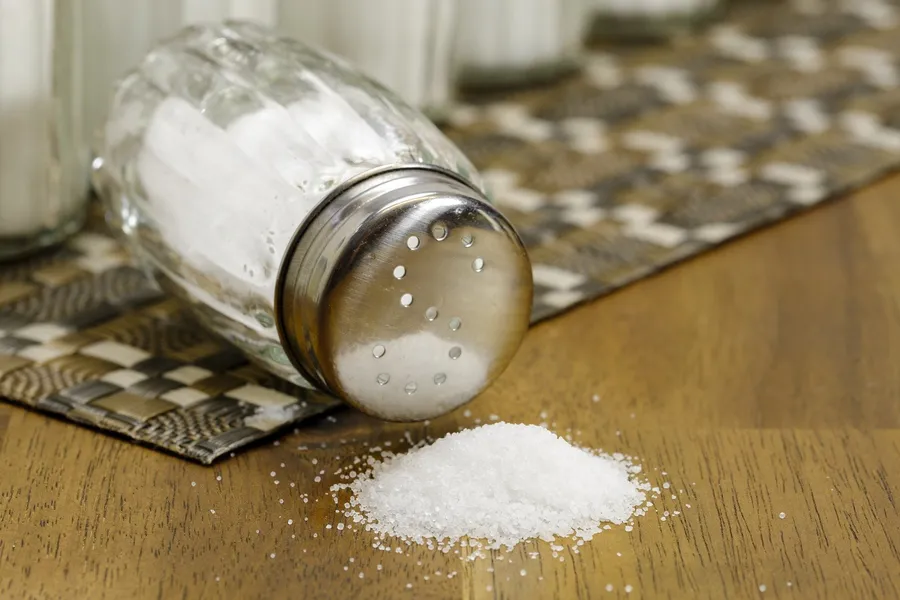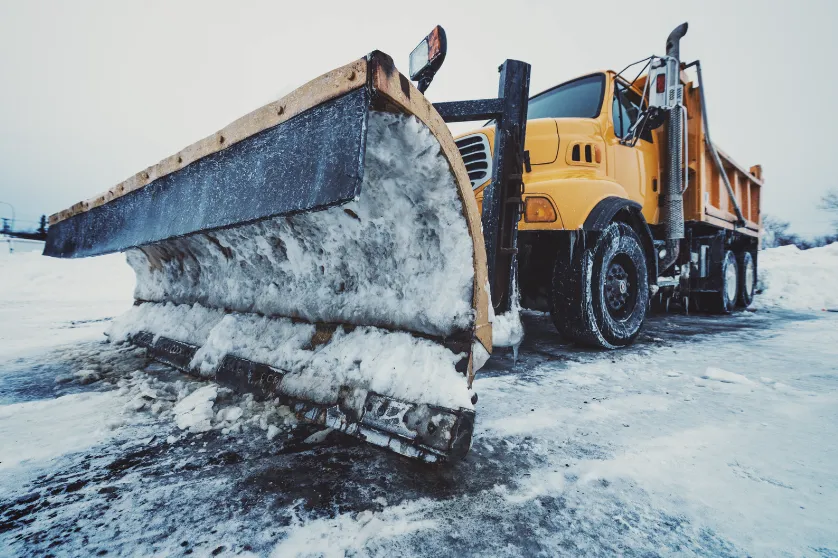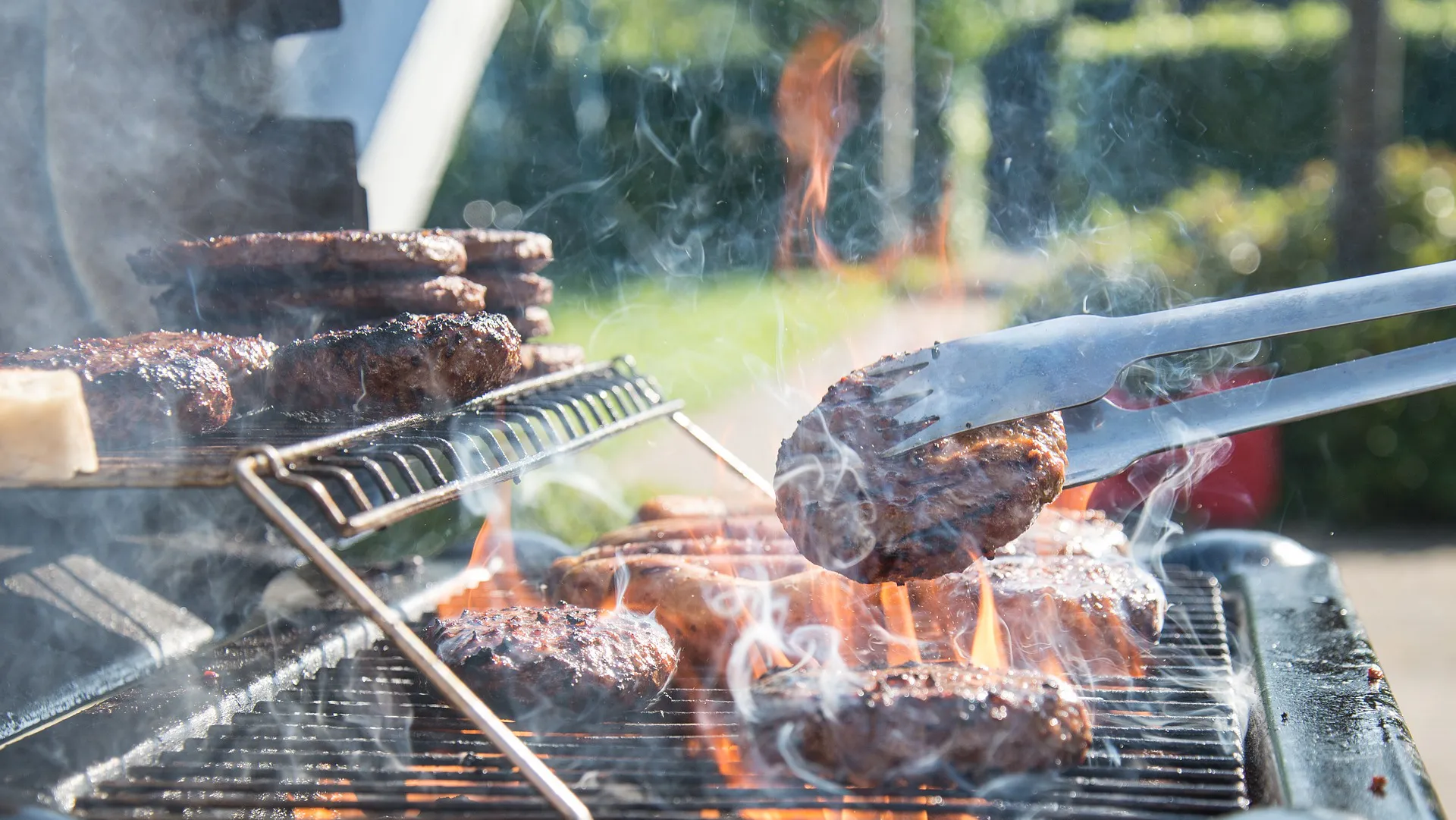Science Tricks to Up Your Barbecue Game
Posted:
Matthew Green, Lead Science Presenter and TELUS World of Science – Edmonton, is passionate about science, food and fatherhood. He likes to dive into the theory behind deliciousness, understanding the science of yum. He’s cooked up some science facts that you can use to up your barbecue game this Father’s Day.
There’s nothing too complicated about cooking a steak on the barbecue. The process is pretty simple: get meat, apply heat, then eat. So how come sometimes I make a restaurant quality striploin, and other times I end up with a piece of leather? There are countless resources out there that tell me what I can do to improve my grilling game, but very few that tell me why. As a big fan of science, I like to understand what exactly is going on under the lid.

The Most Delicious Science
Chemical Reactions
The best part of any meat dish is the beautiful brown crust that forms around the outside. As the meat is heated, it changes colour and develops a rich mahogany hue that tells you that you’re in for a treat. This process is commonly called browning, but science literate chefs like to refer to it as the Maillard Reaction or caramelization; two processes that are frequently confused for each other. They both occur as food cooks, cause food to turn brown and create complex flavours and aromas. However, they have some clear differences that can be exploited to take your dish to the next level.
Caramelization occurs when high heat meets sugar. The sugar molecules undergo a process called thermal decomposition; high heat breaks the bonds holding the molecules together, and the fragments mix and reform into hundreds of simpler molecules. Some of these simpler molecules are long chains of identical pieces, called polymers, which give the caramelized sugar it’s sticky texture. Other molecules create new flavours and aromas. Caramelization tends to create flavours that are sweet, but if it goes on too long it will create bitter flavours too.
The Maillard Reaction is a bit more complex. It occurs when sugar and proteins are exposed to high heat. The reaction between the sugar and protein molecules creates a variety of flavour compounds that tend to taste savoury. Because every type of meat (and every fruit, vegetable and dough) contains different proteins, there is a lot more variety in the flavours created by the Maillard Reaction.
Science Tips
- Dry your meat before cooking it. Water boiling on the outside of the meat will cause evaporative cooling, which prevents the outside of the meat from getting to the higher temperatures needed for these reactions to occur. The meat will still cook, but it won’t brown.
- Don’t add sugar until late in the cooking process. Excess sugar means caramelization will dominate and the Maillard Reaction will be dampened. Brown your meat with no added sugar to get a nice Maillard crust, then add sugary sauce near the end to add caramelization. Combining the two reactions will lead to delicious results.

Some Like it Hot
Greet the Heat
Not all heat is made equal. The biggest mistake I made early in my grilling career was to use the built-in thermometer as a guide. I am not saying that the thermometer is useless, it’s just that it is only worthwhile in very specific situations. To understand how to use heat properly, we need to remember what thermodynamics teaches us about heat transfer. Heat transfers in three basic ways:
Convection: Moving air carries heat to the meat.
Conduction: Heat travels directly from solid (grill) to solid (meat)
Radiation: Heat travels through space from source (flame) to target (meat)
Depending on what you are cooking, you will be primarily using radiation or convection in your barbecue. Conduction will be responsible for grill lines (which are awesome) but won’t play a significant role in cooking your food.
Science Tips
- Choose the right type of heat transfer for the job. If you are cooking low-and-slow you will want to focus on convection. Keep your meat away from direct heat and let air flow do its job. If you are cooking quickly, put your meat above the heat source with few barriers in between. If you want to keep your meat red in the middle but cooked on the outside, keep the lid open. Keeping the lid open removes convection completely, which means the side of the meat away from the heat won’t be cooking.
- Clean your barbecue. Not the grills, but the walls. The inside of your barbecue will build up a layer of char, which is fantastic at absorbing and holding on to heat. A clean barbecue is a very reflective surface, heat bounces off it and back at your meal.

Tis The Season
Get a Little Salty
The hardest job in grilling is making sure the meat is fully cooked but still moist and juicy. Some swear the secret is to sear, others rely on a marinade, but I prefer to use science. Half an hour before cooking coat your meat in a thin layer of salt. Before hitting the grill, wash the salt off and dry the meat. Apply whatever seasonings you desire and cook like normal. This “dry brine” method will ensure moisture stays locked in the meat.
When the surface salt encounters moisture from the meat, the salt molecule (NaCl) breaks apart into charged ions (Na+ and Cl-). These ions react with the proteins in the meet to form polymers, long stretched out molecules that hang on to moisture. This is a method where less is more: if you use too much salt or brine for too long, you’ll create a jelly-like consistency inside the meat, similar to a hot dog.
Science Tips
- A lot of people get brines and marinades confused. Brines are for moisture, marinades are for flavour. Don’t be afraid to use both, but it’s best to use one at a time. After the brining process is complete, marinate the meat before putting it on the grill. Just remember that a wet marinade will prevent the Maillard Reaction from occurring.
- Salt has a bad reputation, but it’s necessary for your body to function. Your body uses salt to regulate the amount of water that is held in your cells. Salt in a brine has a similar effect. Through processes called diffusion and osmosis, salt loads the cells in a piece of meat with fluid adding to it’s moisture retaining ability.
Related Articles


Food Chain Reactions
How Climate Change is Impacting Canada's Lakes


It Is Ice to See You
How Seasonal Connections Are Affected by Climate Change


Getting to the Core of Climate Change
A Look at How Refrigerants Are Affecting Our Environment through Ice Cores
Related Articles


Food Chain Reactions
How Climate Change is Impacting Canada's Lakes


It Is Ice to See You
How Seasonal Connections Are Affected by Climate Change


Getting to the Core of Climate Change
A Look at How Refrigerants Are Affecting Our Environment through Ice Cores




